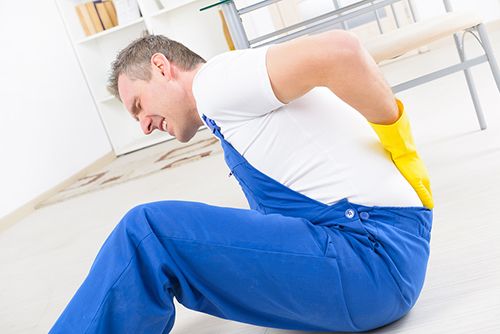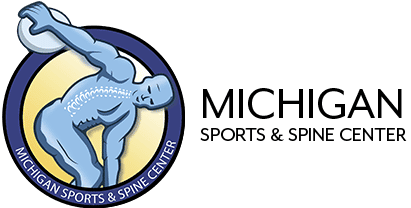Neck Pain Causes – Home Remedies and Treatments


A sudden-onset (acute) bout of neck pain is common. Two out of three of us will have neck pain at some time in our lives. In most cases it is not due to a serious disease or neck problem and often the exact cause for the pain is not clear. This is called ‘nonspecific neck pain’. Most are probably due to minor sprains or bad posture. Full recovery occurs in most cases. The usual advice is to keep the neck active. Painkillers are helpful until the pain eases. Persistent (chronic) pain develops in some cases and further treatment may then be needed.
Understanding the neck
The back of your neck includes the cervical spine and the muscles and ligaments that surround and support it. Your cervical spine is made up of seven bones called vertebrae.
- The first two are slightly different to the rest, as they attach your spine to your skull and allow your head to turn from side to side.
- The lower five cervical vertebrae are roughly cylindrical in shape – a bit like small tin cans – with bony projections.
The sides of your vertebrae are linked by small facet joints.
Between each of your vertebrae is a disc. The discs are made of a tough fibrous outer layer and a softer gel-like inner part. The discs act like shock absorbers and allow your spine to be flexible.
Strong ligaments attach to adjacent vertebrae to give extra support and strength. Various muscles attached to your spine enable your spine to bend and move in various ways. (The muscles and most ligaments are not shown in the diagram, for clarity.)
The spinal cord, which contains nervous tissue carrying messages to and from your brain, is protected by your spine. Nerves from your spinal cord come out from between the vertebrae in the neck to take and receive messages to the neck and arms. A major blood vessel called the vertebral artery also runs alongside the vertebrae to carry blood to the rear (posterior) part of your brain.
What are the types and causes of neck pain?
Neck pain is common. About 2 in 3 people develop a bout of neck pain at some time in their lives. One survey done in the UK found that, of adults aged 45-75 years, about 1 in 4 women and about 1 in 5 men had current neck pain.
Types and causes of neck pain include:
Nonspecific neck pain
This is the most common type. This is sometimes called ‘simple’ or ‘mechanical’ neck pain. Often the exact cause or origin of the pain is not known. It may include minor strains and sprains to muscles or ligaments in the neck. Bad posture may also be a contributing factor in some cases. For example, neck pain is more common in people who spend much of their working day at a desk, with a ‘bent-forward’ posture.
A ‘whiplash’ jolt to the neck
This is most commonly due to an accident involving a vehicle, such as a car crash. It can cause neck pain.
Sudden-onset (acute) torticollis
This is sometimes called ‘wry neck’. A torticollis is a condition in which the head becomes twisted to one side and it is very painful to move the head back straight. The cause of acute primary torticollis is often not known.
However, it may be due to a minor strain or sprain to a muscle or ligament in the neck. Some cases may be due to certain muscles of the neck being exposed to cold (sleeping in a draught). It is common for people to go to bed feeling fine and to wake up the next morning with an acute torticollis. The pain usually eases and clears away, without any treatment, over a few days.
Occasionally, torticollis is due to more serious causes.
Wear and tear (degeneration)
Wear and tear of the spinal bones (vertebrae) and the discs between the vertebrae is a common cause or recurring or persistent neck pain in older people. This is sometimes called cervical spondylosis.
However, most people over the age of 50 have some degree of degeneration (spondylosis) without getting neck pain.
Cervical radiculopathy
When the root of a nerve is pressed on or damaged as it comes out from your spinal cord in your neck (cervical) region, the condition is known as cervical radiculopathy. As well as neck pain, there are symptoms such as loss of feeling (numbness), pins and needles, pain and weakness in parts of an arm supplied by the nerve. These other symptoms may actually be the main symptoms rather than neck pain.
The common causes of a radiculopathy are cervical spondylosis and a prolapsed disc. (A prolapsed disc is sometimes called a ‘slipped disc’ but the disc does not actually slip. What happens is that part of the inner softer area of the disc bulges out (prolapses) through the outer harder part of the disc, pressing on the nerve as it passes out of the vertebra.)
What are the symptoms of nonspecific neck pain?
Pain develops in your neck and may spread to the shoulder or base of your skull. Movement of the neck feels restricted and moving your neck may make the pain worse. The pain sometimes spreads down an arm, sometimes as far as to your fingers. Sometimes, ‘pins and needles’ develop in part of your arm or hand. This is due to irritation of a nerve going to your arm from the spinal cord in your neck. Tell a doctor if these symptoms occur, as he or she will want to check there is no significant pressure or damage to a nerve in your neck.
What are the treatments for nonspecific neck pain?
Exercise your neck and keep active
Aim to keep your neck moving as normally as possible. At first, the pain may be quite bad and you may need to rest for a day or so. However, gently exercise the neck as soon as you are able. You should not let it ‘stiffen up’. Gradually try to increase the range of the neck movements. Every few hours gently move the neck in each direction. Do this several times a day. As far as possible, continue with normal activities. You will not cause damage to your neck by moving it.
Medicines
Anti inflammatory medication , muscle Relaxers &Painkillers are often helpful.
Other treatments
Some other treatments which may be advised:
- A good posture may help. Check that your sitting position at work or at the computer is not poor. It is important to make sure that your head is not flexed forward and also that your back is not stooped when you are sitting and working. You should make sure you sit upright. Yoga, Pilates and the Alexander Technique all improve neck posture but their value in treating neck pain is uncertain.
- A firm supporting pillow seems to help some people when sleeping. Try not to use more than one pillow.
- Physiotherapy:
- Various treatments may be advised by a physiotherapist. These include traction, heat, cold, manipulation, etc. The value of each of these treatments is uncertain, as the results of research studies looking at which treatments work best can be conflicting.
- However, what is often most helpful is the advice a physiotherapist can give on neck exercises to do at home.
- A common situation is for a doctor to advise on painkillers and gentle neck exercises. If symptoms do not improve over a week or so, you may then be referred to a physiotherapist to help with pain relief and for advice on specific neck exercises.
- Low-level laser therapy (LLLT) is a relatively uncommon, non-invasive treatment for neck pain, in which non-thermal laser irradiation is applied to sites of pain. It can be effective in some people.
Treatment may vary and you should go back to see a doctor:
- If the pain becomes worse.
- If the pain persists beyond 4-6 weeks.
- If other symptoms develop such as loss of feeling (numbness), weakness, or persistent pins and needles in part of an arm or hand, as described previously.
Other pain-relieving techniques may be tried if the pain becomes persistent (chronic). A pain management programme may be offered to help you control and live with your pain. Chronic neck pain is also sometimes associated with anxiety and depression which may also need to be treated.
How to ease neck pain at home
If you have minor neck pain or stiffness, take these simple steps to relieve it:
- Apply ice for the first few days. After that, apply heat with a heating pad, hot compress, or by taking a hot shower.
- Take OTC pain relievers, such as ibuprofen or acetaminophen.
- Take a few days off from sports, activities that aggravate your symptoms, and heavy lifting. Resume normal activity slowly as your symptoms ease.
- Exercise your neck every day. Slowly stretch your head in side-to-side and up-and-down motions.
- Use good posture.
- Avoid cradling the phone between your neck and shoulder.
- Change your position often. Don’t stand or sit in one position for too long.
- Get a gentle neck massage.
- Use a special neck pillow for sleeping.
- Don’t use a neck brace or collar without your doctor’s approval. If you don’t use them properly, they can make your symptoms worse.What is the outlook for people with neck pain?
Many people experience neck pain because of poor posture and muscle strain. In these cases, your neck pain should go away if you practice good posture and rest your neck muscles when they’re sore. Make an appointment with your doctor if your neck pain isn’t improving with home treatments.
ABOUT MICHIGAN SPORTS & SPINE CENTER:
We’re innovative leaders utilizing cutting-edge technologies such as musculoskeletal ultrasounds, PRP, stem cell treatment, and other innovative procedures. Michigan Sports & Spine Center is committed to resolving your pain, not simply masking it. We treat the whole body, not just the injury, and perform preventative treatment so your injury doesn’t come back. Our studies prove that Michigan Sports & Spine Center has patient success rates much higher than the national average. We treat everyone from high-profile athletes to your neighbor next door. Our primary focus is getting our patients back into the game of life!
